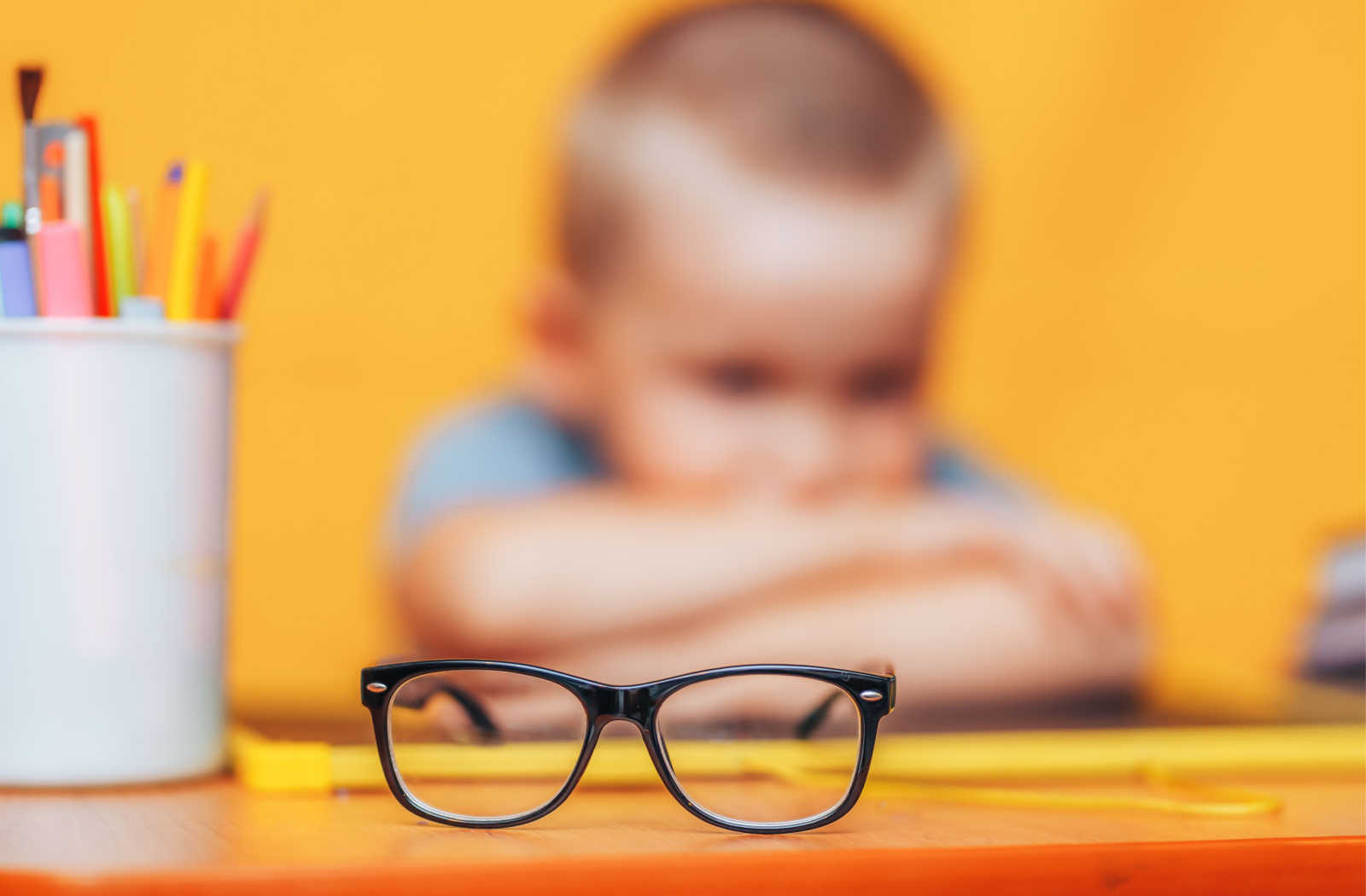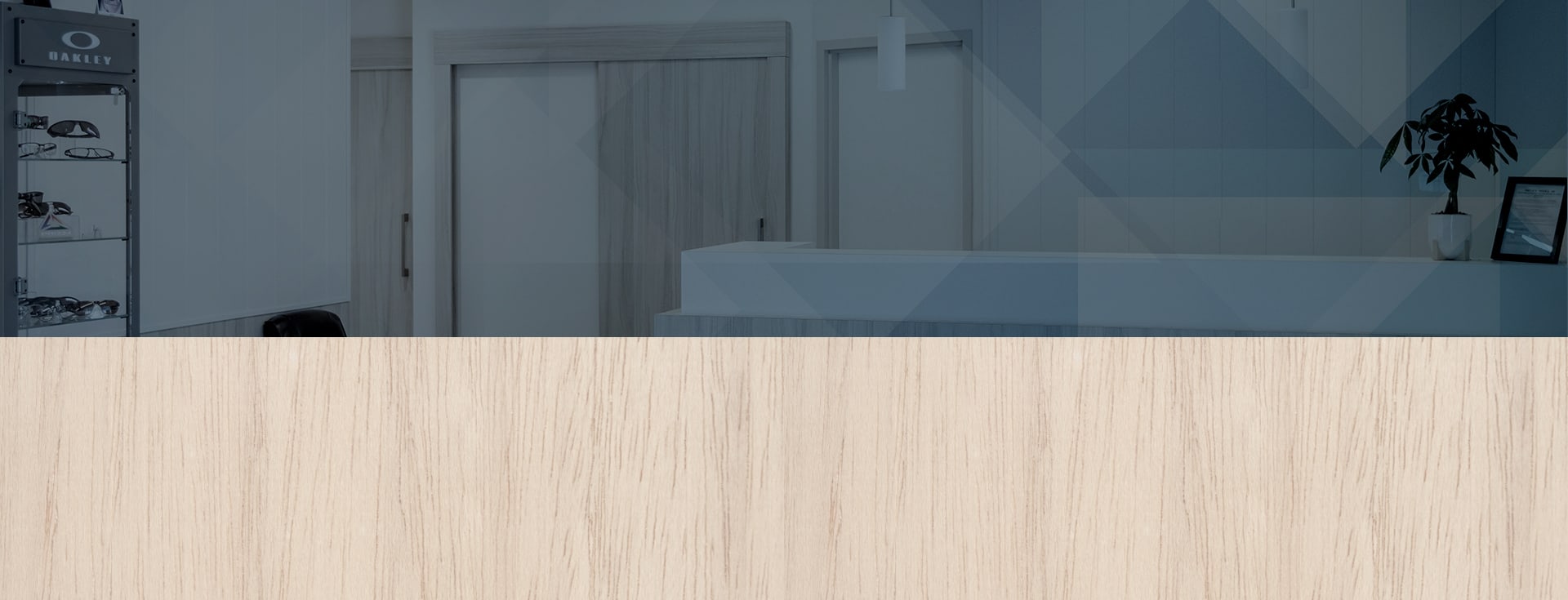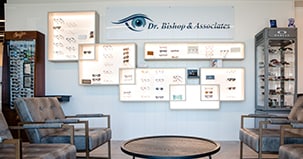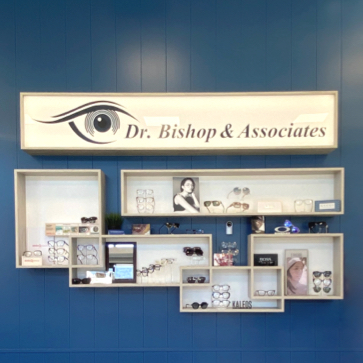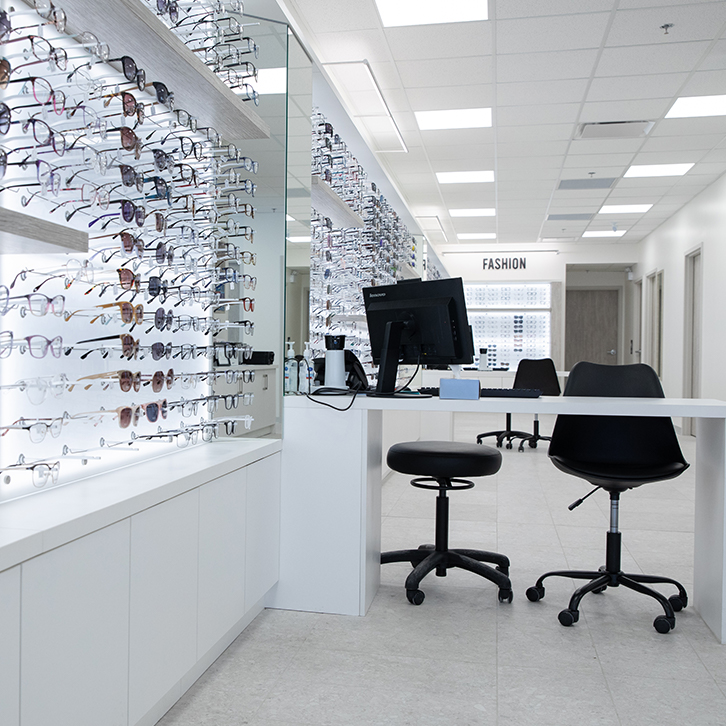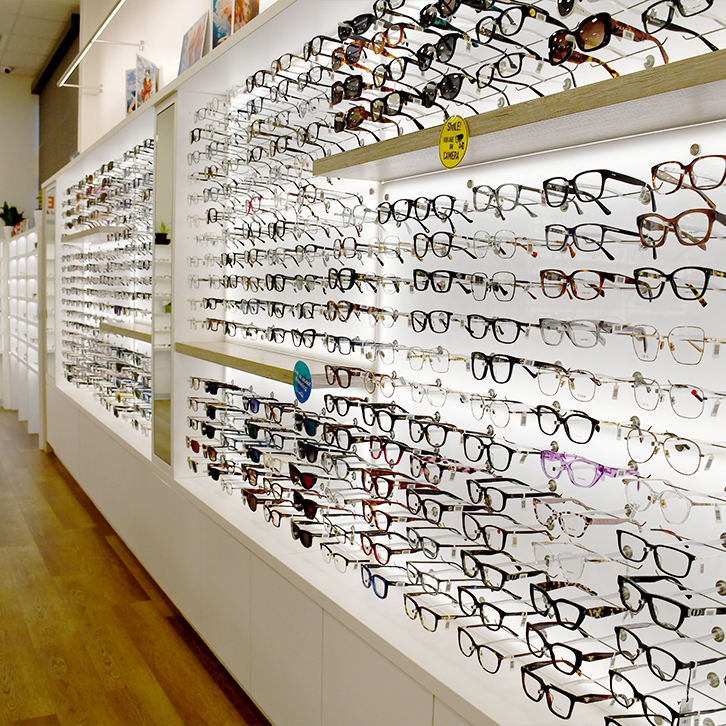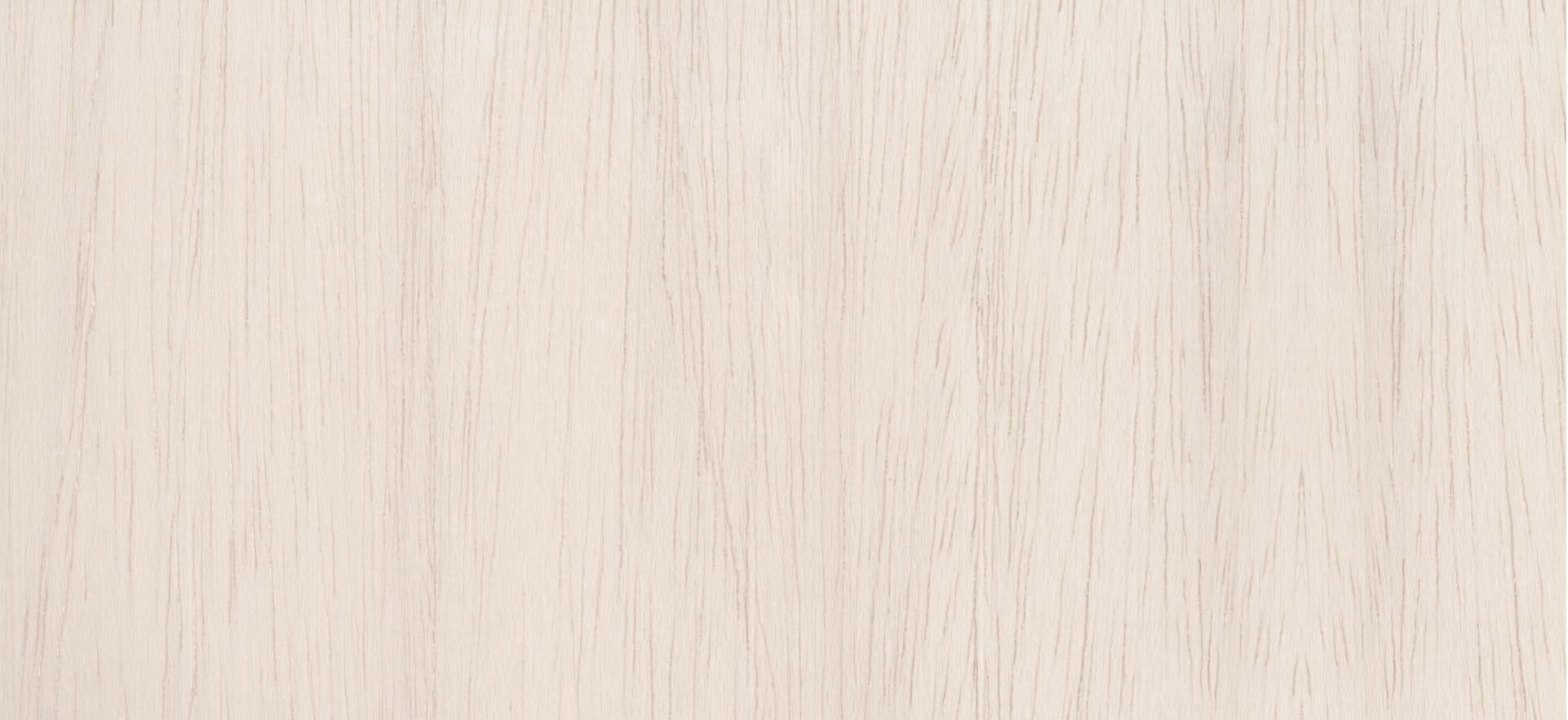Myopia isn’t merely an inconvenient vision impairment—it’s a global public health issue affecting nearly one-third of the population worldwide. The World Health Organization reports that by 2050, over 50% of the world’s population will be myopic.
We know that sounds a little bit dramatic. But childhood myopia tends to become more severe throughout adolescence.
What was a relatively mild prescription in childhood may result in a heavy prescription by adulthood, which can mean more expensive glasses and a higher risk of vision loss due to high myopia.
Myopia management uses specialized contacts, glasses, or eye drops, to slow down the progression of nearsightedness. This treatment doesn’t cure myopia, but it can prevent the need for a much stronger prescription later, providing a layer of protection against vision loss.
What is Myopia?
Myopia, also known as nearsightedness, is a very common refractive error that makes objects far away appear blurry.
When the eye grows too long, or the eye’s cornea is too curved, it causes light to be unable to focus properly on the retina. While a person who is nearsighted can see things close-up, their distance vision is compromised.
How is Myopia Diagnosed?
An eye doctor can diagnose myopia using a visual acuity test. If you’ve ever read letters off a chart while you’re at the eye doctor, you’ve taken a visual acuity test.
For children who haven’t learned their letters yet, a modified test using shapes or symbols can be used.
How Early Does Myopia Happen?
For a long time, optometrists were used to seeing myopia start to emerge around age 12 or 13 in Canadian kids. More recently, though, it’s increasingly showing up in children who are 6 years old, or even younger.
The concerning thing about myopia starting younger is there’s more time for nearsightedness to progress because eyes continue growing until around age 21. That means a young person’s prescription may worsen year after year, potentially resulting in high myopia.
The Problem with High Myopia
High myopia is any prescription that is -5.00D or higher. High myopia not only carries a more debilitating vision impairment and potentially more expensive glasses, but also an increased risk of vision loss.
Specifically, high myopia increases the risk of retinal detachment, glaucoma, and cataracts, all of which can lead to blindness if they’re not treated.
What Causes Myopia?
Myopia isn’t caused by any one thing, but researchers have found that certain risk factors are linked with developing myopia.
The Canadian Association of Optometrists notes the following risk factors:
- One or more parents with myopia
- Not enough time spent outdoors
- Too much time spent doing near work (like reading and writing)
- Too much screen time
How is Myopia Cured?
Myopia, like the other common refractive errors hyperopia (farsightedness), astigmatism, and presbyopia, is not curable, but it is correctable.
For many people, myopia can be quite easily corrected with glasses or contacts. Depending on the severity of nearsightedness, and other factors including astigmatism and dry eye, lots of nearsighted people have the option of laser vision correction surgery.
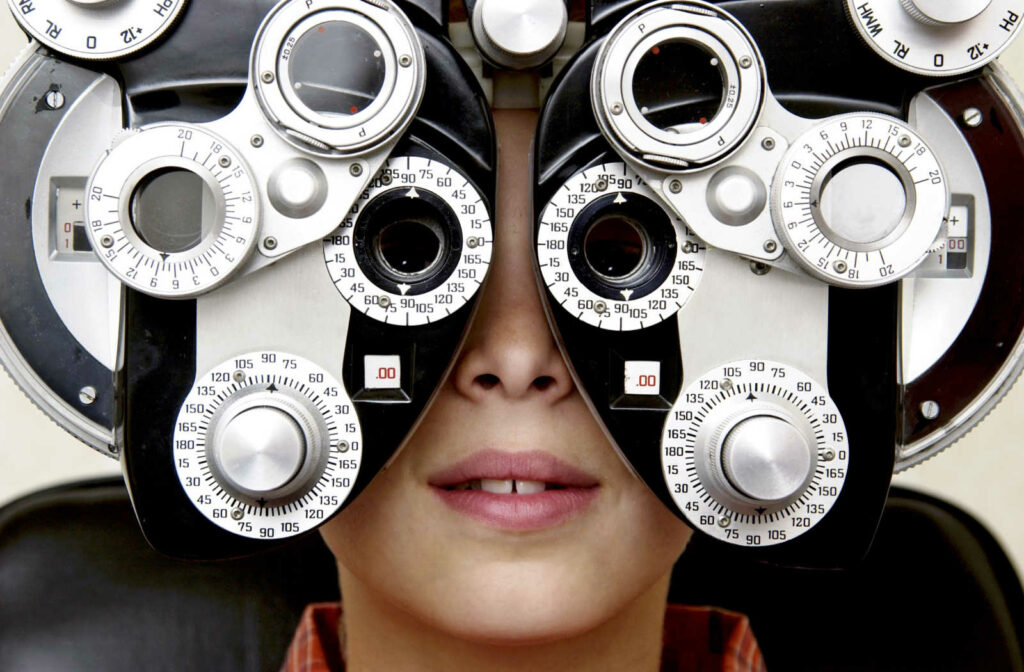
How Does Myopia Management Help?
Myopia management, also called myopia control, can start as soon as your child is diagnosed with myopia. The earlier you begin myopia management, the greater an impact it can have on your child’s vision.
That’s because specialized myopia management contact lenses, glasses lenses, and medicated eye drops each work to slow the growth of the eye’s axial length. Then, the progression of the individual’s nearsightedness slows too.
The less time the eye has to grow longer uninhibited, the lower the potential prescription by adulthood.
Types of Myopia Management
The three main types of myopia management are contact lenses, multifocal eyeglasses, and atropine eye drops.
In an eye exam, your child’s optometrist can advise the best management route for your child based on their age, prescription, comfort level with contacts or drops touching their eyes, and other personalized considerations.
Daily Contact Lenses
Specialized contact lenses such as ACUVUE® Abiliti™ and MiSight® 1 day have been developed to correct your child’s vision while slowing the axial elongation of the eye that worsens nearsightedness over time.
Contacts can be a great option for kids who don’t like wearing glasses or are too tough on their frames. Daily disposable lenses mean children don’t have to worry about cleaning the lenses at the end of the day.
Low-Dose Atropine Eye Drops
Atropine is the medication eye doctors use to dilate the eye during an eye exam. It is used in a very low 0.01% dose eye drop, typically at bedtime, to slow the progression of myopia.
The drops are only effective for as long as they are used; the myopia control effects will stop when the treatment stops. It’s very important to continue with the drops as directed by your optometrist because there can be a “rebound” effect when atropine is discontinued, if it’s not tapered off carefully.
Atropine doesn’t correct vision, so a child will need to wear their regular glasses or contacts during the day.
Myopia Control Spectacle Lenses
For some children, glasses may be the best option for managing myopia progression because they’re so easy to wear and they can provide a significant amount of myopia management.
In fact, Essilor Stellest lenses have been shown to slow the progression of myopia by an average of 67% compared to no myopia management. CooperVision’s new SightGlass spectacle lenses showed a 59% reduction in the first 2 years of an early study.
How to Get Started with Myopia Management
Not every eye doctor is skilled in myopia management, and they don’t all offer a range of options to find the best treatment for your child. Make sure your eye doctor provides comprehensive management options for myopia.
Book your child’s eye exam with Dr. Bishop & Associates today, and let us put your mind at ease.

